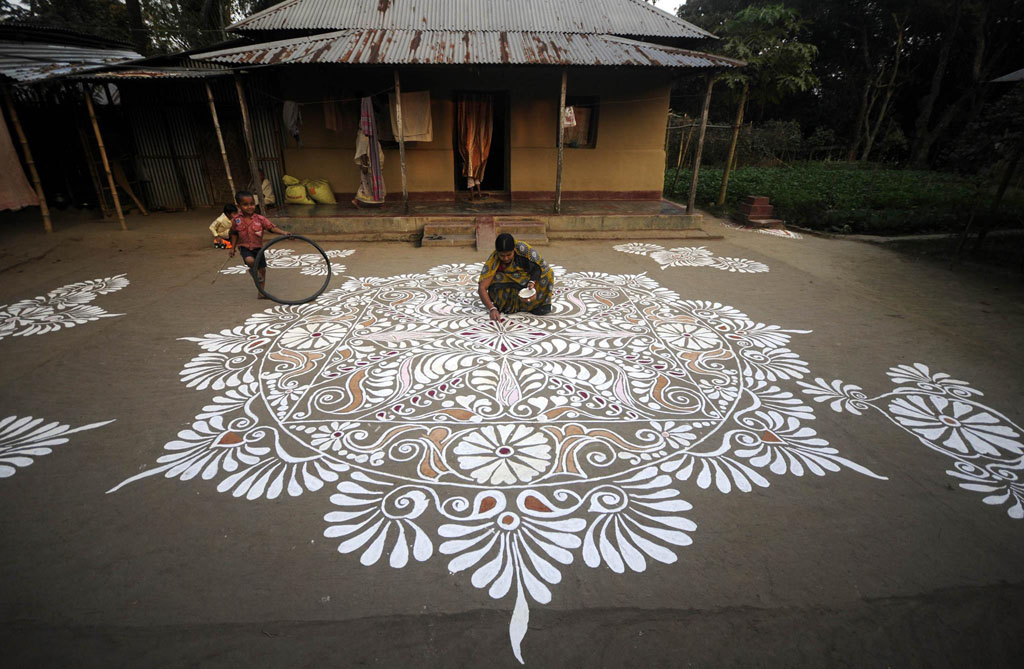"Immersing in the Cosmic Patterns: A Journey through Alpana Design in Hinduism"
"Explore Alpana Design, a traditional Hindu art form used for spiritual decoration in rituals and festivals. Dive into its rich symbolism and aesthetics."

Alpana design, an integral element of Hindu culture, manifests as intricate patterns and motifs, often drawn on the ground or walls during festivals and auspicious occasions. The art finds its roots in Sanskrit literature where 'Alpana' translates to 'to coat or to cover', representing the coating of our spirit with an array of vibrant patterns and positive energy.
The beauty of this artistic tradition lies in its versatility, with designs varying from simple geometric shapes to complex artistic depictions of deities, flora, and fauna, depending upon the religious and socio-cultural environment. The use of natural materials like rice flour and turmeric further aligns this art form with the Hindu philosophy of harmonious coexistence with nature.
Alpana is an art form that transcends the aesthetic. It manifests the spiritual beliefs of the people who practice it. Drawing alpana is a meditative process, bringing inner peace and tranquility to the practitioner and the observer alike. It is believed to invite divine positive energy, known as 'Shakti' into the household and to ward off evil spirits.
One of the most significant occasions where Alpana takes center stage is during the festival of Diwali, where homes and public spaces are adorned with bright, beautiful Alpana designs, reflecting the joy and grandeur of the festival. The design also holds a special place in wedding ceremonies, where the bride's feet are decorated with alpana, symbolizing the start of a new journey filled with blessings and prosperity.
The global recognition of Alpana as an art form has grown and modern artists use various mediums such as acrylic paints and glitters to create long-lasting Alpana designs. This evolution of Alpana, while deeply rooted in tradition and culture, shows the adaptability of this art form, tying the old and the new together in beautiful, harmonious patterns.
